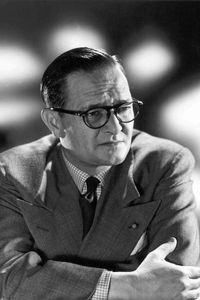Gregory Toland, a renowned cinematographer, was born in 1904 in Illinois, the only child of Jennie and Frank Toland. Following his parents' divorce in 1910, Gregg and his mother relocated to California, where she found work as a housekeeper for individuals in the movie industry. This connection potentially led to a 15-year-old Gregg securing a $12-a-week position as an office boy at William Fox Studios, later advancing to assistant cameraman with a salary of $18 a week.
As sound revolutionized the film industry in 1927, Toland played a crucial role in developing a tool that silenced the camera's noise, enabling it to move more freely. His innovative work earned him his first solo credit in 1931 for the Eddie Cantor comedy "Palmy Days." Four years later, he received his first Academy Award for his contribution to William Wyler's "Wuthering Heights."
In 1941, Toland collaborated with Orson Welles on the iconic film "Citizen Kane." Notably, he protected Welles from potential embarrassment by discreetly discussing technical matters with him, rather than addressing them publicly. Toland's cinematography for "Kane" featured a pioneering technique known as "deep focus," which allowed background objects to be rendered as clearly as foreground objects.
This groundbreaking approach earned Toland widespread recognition, and he became the highest-paid cinematographer in the industry, earning as much as $200,000 over a three-year period. Additionally, he was one of the first cinematographers to receive prominent billing in the opening credits, rather than being relegated to a lengthy list of credits.
Tragically, Toland's life was cut short in 1948 when he passed away at the age of 44. He left behind a daughter, Lothian, from his second marriage, as well as two sons, Gregg Jr. and Timothy, from his third. Lothian would go on to marry the famous comedian Red Skelton.


















